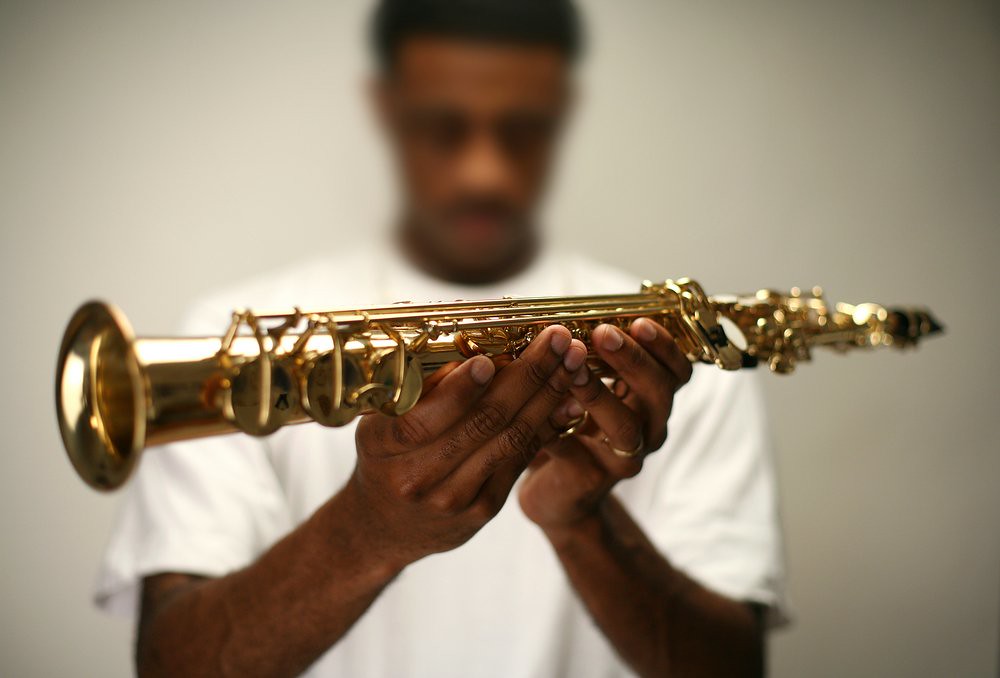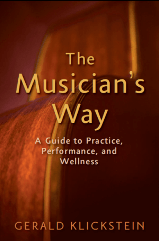 “Ten dubious repetitions plus a single accurate one don’t equal security.”
“Ten dubious repetitions plus a single accurate one don’t equal security.”
–The Musician’s Way, p. 52
Naïve practicers might repeat a passage profusely and make error after error.
Then, on the eleventh try, when it finally comes out right, they say, “There, I’ve got it,” and move on to something else.
But ten dubious repetitions plus a single accurate one don’t equal security. Quite the opposite.
Repetition & Habits
Repetition inevitably begets habits.
If we squander ten garbled recaps while deciphering how to execute a passage, we’ve ingested chaotic tendencies that don’t disappear after the passage is understood.
In effect, the confused run-throughs implant mixed-up mental patterns that can be replaced only with tedious work.
Added to that, excessive repetition overworks the body and is a prime cause of injury.
“Confused run-throughs implant mixed-up mental patterns that can be replaced only with tedious work.”
Map Before Repeating
A far better strategy is to devise interpretive and technical maps before repeating.
Then, we don’t need many repetitions to feel secure, and we can use the “three-times” formula proposed in The Musician’s Way:
- Execute a musical passage three times consecutively without slips (complex passages may warrant five runs).
- Similarly learn another passage.
- Progressively join individual passages into larger sections.
Above all, we should steer clear of repeated, imprecise run-throughs.
That is, if our first shot at a passage isn’t trouble free, we should isolate and solve the problems instead of just running the entire passage again.
Making vs. Repeating Mistakes
As we commit to accurate, expressive repetitions, let’s also be unafraid of errors.
Mistakes will happen.
Handled intelligently, miscues feed our evolution because they alert us to faults in our mental maps.
In fact, as discussed in Chapter 3 of The Musician’s Way, errors and problems can be our most valuable teachers. But repeating mistakes is foolish.
“Errors and problems can be our most valuable teachers. But repeating mistakes is foolish.”
If you ever catch yourself in a whirl of hazy repetition, stop what you’re doing and regroup.
See The Musician’s Way for comprehensive practice and performance guidelines. Read reviews.
Related posts:
Accurate from the Start
Beautiful Repetition
Honest Practice
Mindful Musicianship
Varied, Distributed, and Interleaved Practice
© 2018 Gerald Klickstein
Adapted from The Musician’s Way, p. 52
Photo © E. Kuliyev, licensed from Shutterstock.com


Yes, I remember that chapter very well!
All very true because we end up building in the mistakes rather than getting the notes right and music right on. Another side-effect of this is in the end we end up working the repair into the music so that we will end up forever fixing the mistake as we play that section, and we will anticipate making that error when we get to that spot. I noticed that with stuff I worked on when I was young and have come back to now.
On another note relating to this, which I have learned from my current teacher. If you can’t play something right, you’re playing too fast and too fast too soon. You need to go back and practice slowly, and ever so slowly to get the underpinnings solid before going on to the music. Once that’s solid, we can then move on to the musical stuff because we no longer need to focus on the mechanics.
Well said, John – thanks for reading and commenting.
Your point about slow practice strikes me as especially apt, but it’s crucial that, when we practice slowly, we do so in ways that support faster execution.
I write more about that issue in my post, A Different Kind of Slow Practice.
Absolutely spot on. Using my practicing for example, I only used this for note accuracy and once accurate, I moved on towards the proper tempo. As one who can read quickly, the notes part was easy and it was those tricky parts that needed refining.
My teacher was very helpful here too because he’s fastidious about metronome markings, and we set that final speed as the goal.
As you mentioned, one of the pitfalls of working slowly for too long is in fact losing the music as I call it. We lose that forward motion, and in many cases our slow practicing changes our fingering because what works slowly does not always work when the same passage is played at the proper tempo.
This is an issue I ran into with my very first teacher. With her we worked on stuff for ages never passing above an adagio if that in tempo, and my playing, as you said too, became harsh, sterile, and boring.
Most helpful examples, John. I greatly appreciate you contributing to The Musician’s Way community!